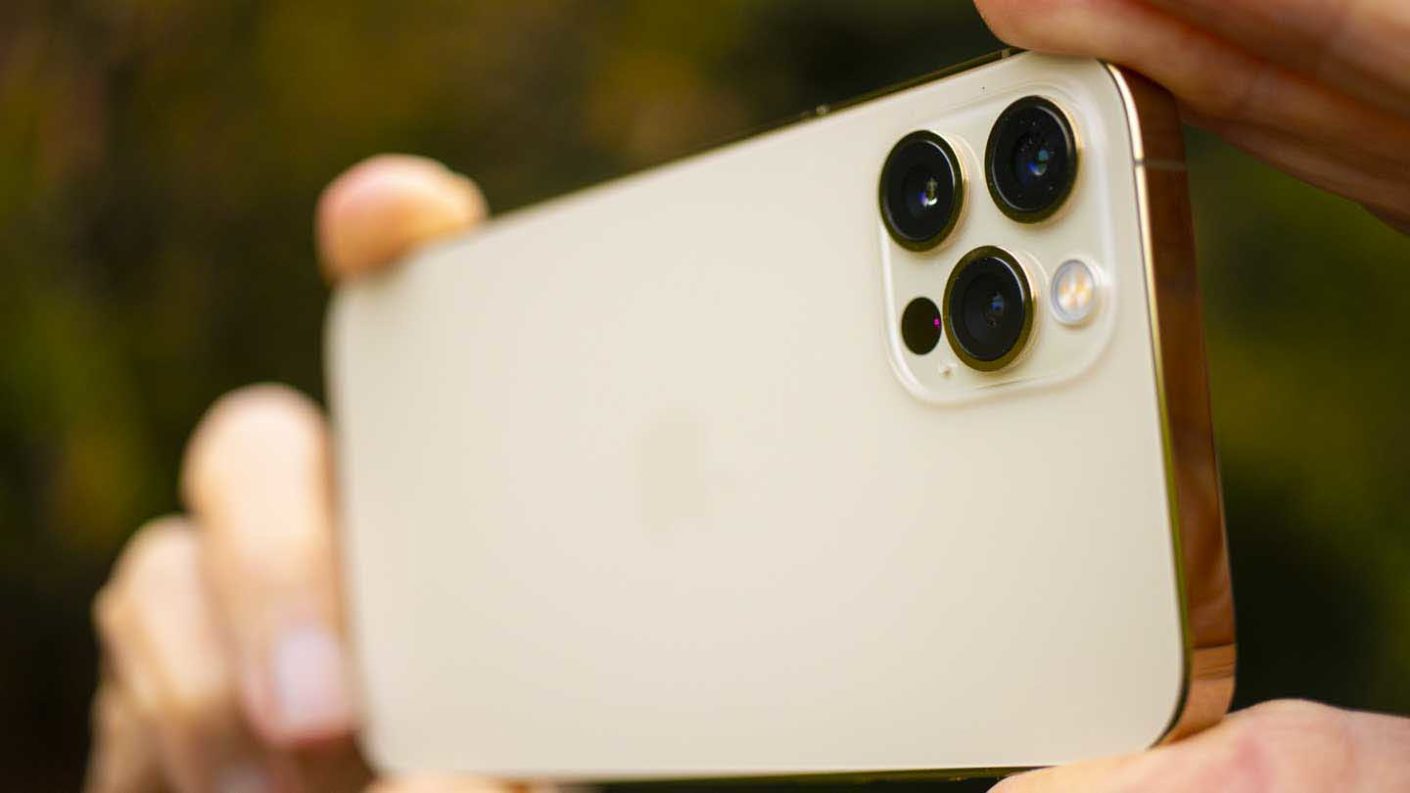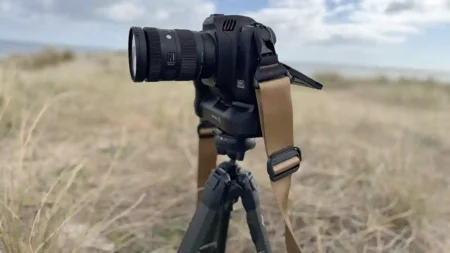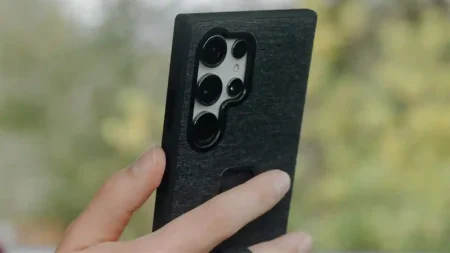Snap Verdict
If you are keen to get a brand new iPhone but don’t quite have the budget for the iPhone 11 Pro, the iPhone 11 makes a lot of sense. Two of the onboard cameras are the same, only sacrificing the telephoto lens here. There are other compromises to be made elsewhere, but otherwise it’s a great option for Apple fans on a budget.
Overview
This year, alongside its flagship model the iPhone 11 Pro (and the larger iPhone 11 Pro Max), Apple also introduced a “budget” friendly option, in the shape of the iPhone 11. It replaces last year’s iPhone XR, and aims to be the more mass-market option at a cheaper price.
It makes some compromises with its specifications to keep it more affordable, but interestingly, the camera is almost identical to the more expensive iPhone 11 Pro. You get the same wide-angle and ultra wide-angle lens, but you lose the 2x telephoto optic.
That means you get a 26mm f/1.8 (equivalent) lens, alongside a 13mm f/2.4 (equivalent) lens. The native camera app is also almost exactly the same, too. Both the sensors are 12 megapixel devices, and while Apple doesn’t disclose the physical sizes of its sensors, we can probably assume that the main camera has the larger device.
iPhone 11 Price and Availability
While this may be Apple’s “budget” option, it’s still not cheap. The iPhone 11 starts at £729 for the 64GB option, rising to £779 for the 128GB version and £879 for the 256GB version.
For photographers, we think it’s worth spending just a little bit extra (£50) to get the higher capacity version for all your photos and videos – even better if you can find the funds for the 256GB version. It is available to buy now.
Features
We’ve already discussed the sensors and lenses, but there are plenty of other features on board the iPhone 11 which are appealing to photographers.
The native camera app comes equipped with some new or improved functionality, such as Night Mode, something we’ve been used to seeing from other manufacturers and has been long-awaited for iPhone. There’s also an improved Portrait mode (when compared to the iPhone XR), which is also better equipped to photograph non-human subjects such as pets.
There’s also Smart HDR which is automatically activated, plus Deep Fusion which at the time of writing had only just been released to the public – we’ll bring you an update to this review in due course.
As the cheaper iPhone model, we can expect there to be some compromises to be made. One such compromise is with the screen, with the iPhone 11 having a Liquid Retina LCD, which is 6.1-inches in size, compared to the better Super Retina XDR screen of the iPhone 11 Pro.
In terms of battery life, the iPhone 11 promises to deliver an extra hour of battery life when compared to the iPhone XR. I find these kind of promises frustrating because of course it depends on what you’re doing with the phone, but either way it should last a bit longer than its predecessor.
Build Quality
With its 6.1-inch screen, the iPhone 11 actually sits between the iPhone 11 Pro and the iPhone 11 Pro Max in size. I actually prefer the size of the iPhone 11 to the iPhone 11 Pro, while I find the Pro Max to be much too large – this is a bit of a Goldilocks phone.
Although the screen is not as good as the iPhone 11 Pro, the chances of you realising that if you’re using the iPhone 11 in isolation are pretty slim. It’s still a great, vibrant screen that does good justice to your photographs.
Despite being the cheaper model, it still feels very well built and nice to hold in the hand. Of course it’s important to remember that although it’s more affordable for an iPhone, it’s still not exactly cheap.
If you’ve used an iPhone before, then you’ll probably be very familiar with exactly how it works. If you haven’t upgraded since Apple got rid of the physical button on the bottom of the the screen, then you’ll need to learn how all the gestures work, but it’s fairly intuitive.
You can launch the native camera app from the lock screen by long pressing the camera icon. Again, if you’re already an iPhone user, you’ll be pretty at home here. That said, Apple has made some refinements to streamline the native app somewhat, hiding away some of the options in a panel which can be revealed by swiping upwards (such as aspect ratio and flash).
Apple has always kept its native camera app very simple. That’s great if you’re a beginner, or you just want something simple, but it’s a bit more frustrating if you’re an enthusiast or advanced user and would like a bit more control.
There are a select number of different shooting modes to choose from. As standard, the app will launch in “Photo” mode, but you can swipe left or right to select a different shooting option. The video modes are found on the left, while the photo options are found on the right.
It’s important to note at this point that the much-anticipated Night mode is not a selectable mode at all. It will automatically activate when the phone detects there’s not enough light in the scene – and you’ll notice an icon which looks like a moon appearing at the top of the screen.
By tapping on this icon, you’ll be able to make some adjustments, such a increasing or decreasing the number of seconds Night mode will shoot for – you can also switch it off altogether, which is useful if you’re photographing a moving subject.
Portrait mode has been improved since the iPhone XR, with the most important (at least for me) upgrade being that you can now use it to shoot non-human subjects, such as pets. Since this phone uses a wide-angle lens coupled with an ultra-wide-angle lens, I actually find that the results are a little bit more natural than when shooting with the “2x” option on the iPhone 11 Pro (which uses the telephoto lens).
Image and Video Quality
Despite being the more budget-friendly option, it’s great to see that Apple has equipped the iPhone 11 with almost exactly the same camera. If you can live without a telephoto lens then you can save yourself a significant chunk of cash by going for this model.
As we saw with the iPhone 11 Pro, images are nice and vibrant, with a good amount of detail, especially when only looking at them on a phone screen. You can see some examples of image smoothing when looking at them with a bit more scrutiny on a computer screen, but that is to be expected.
The ultra-wide-angle lens produces some excellent images too, and I’m pleased to see Apple finally catching up to the rest of the market in this regard. It’s taken it’s time, but it has done it very well, managing to keep an impressive uniformity of colour and sharpness between the two lenses – which is particularly important when shooting video.
Again, we’ve been waiting a long time for Night mode, but now it’s here, it does an excellent job. There is some image smoothing, again if you examine very closely, but otherwise it keeps things looking pretty natural overall. I’m disappointed not to be able to use Night mode with the ultra-wide-angle lens though, and remain hopeful this will come along with a software upgrade at some point.
Portrait mode, as already mentioned, gets an impressive upgrade. I’ve been very happy with the results it can produce when photographing my dog. If you examine the edge of subjects very finely, you might notice some slightly odd artefacts, but it’s absolutely fine for social sharing or even printing out at small sizes.
Video quality is also the same as with the iPhone 11 Pro, with 4K up to 60fps available. I find that the phone produces very pleasing, smooth and finely detailed videos, with some great editing tools available too.
iPhone 11 Sample Photos
Below is a selection of sample photos shot during the course of our iPhone 11 camera review.
Verdict
There is a lot to like about the iPhone 11, which in many respects makes more sense than the iPhone 11 Pro if you’re keen to keep costs down.
Using the same two cameras as its more expensive brother means that you can rely on it producing excellent images and video, with the only sacrifice being the telephoto lens. How much that bothers you is down to personal preference – I have always found more use for an ultra-wide angle lens than a telephoto option personally, but you may feel differently.
Although the screen is not quite as good quality as the iPhone 11 Pro, in terms of size, I think it represents a good compromise between having a good size display to see your shots without being as cumbersome as the iPhone 11 Pro Max.
While I would like to see some more advanced shooting modes making an appearance on the iPhone 11, if you think of it more like a very good point and shoot model, that just gets the job done, it’s a very sensible option.
Overall, I wouldn’t hesitate to recommend the iPhone 11 to anybody who is keen to get hold of an iPhone but doesn’t have a massive budget to spend. If you’re less brand-loyal, consider that other manufacturers have flagship models at the same price as Apple’s budget offerings – right now, we’d still recommend the Huawei P30 Pro if you’re happy to switch to Android.



